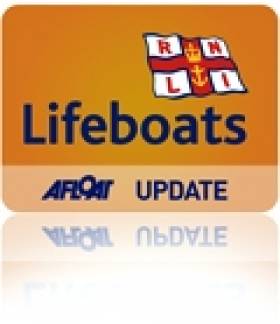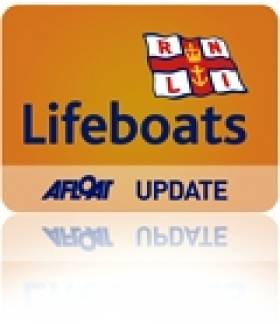Displaying items by tag: Colt Island
Skerries Lifeboat Rescues Colt Island Kayakers
#RNLI - Skerries RNLI rescued a group of teenagers who got into difficulty while kayaking on Sunday evening (30 June).
The volunteer crew launched their inshore lifeboat shortly after 6pm to reports of a group of kayakers on Colt Island who were unable to return to shore due to the deteriorating weather conditions.
Skerries RNLI lifeboat operations manager Niall McGrotty paged the crew after receiving information from a retired crew member that there was a group of kayakers stranded on Colt Island.
The lifeboat was helmed by Joe May and had crew members Philip Ferguson, David Knight and Adam Scott on board. Weather conditions at the time were a force five to six northerly wind and choppy seas.
Arriving on scene three minutes after launching, the lifeboat found 11 teenage boys with five kayaks sheltering on Colt Island, as they were unable to return to shore against the increasing wind and waves.
All 11 boys were taken on board the lifeboat and the five kayaks were taken in tow. The lifeboat towed the kayaks back to the slipway at the station where the volunteer shore crew recovered them. The lifeboat then brought the teenagers safely back to the harbour.
Speaking after the call-out, Skerries RNLI helm Joe May said: "The boys did the right thing in staying together, staying on the island and raising the alarm. If they had tried to make it back to shore we could have been dealing with a much more serious situation.
"Our volunteer crew are always ready to respond to any emergency and we were happy to bring everyone safely home."
Skerries RNLI Responds To Concerns Over Shore Walkers
#RNLI - Skerries RNLI in North Co Dublin were requested to launch by the Irish Coast Guard on Monday evening (24 June) following a call from a concerned member of the public regarding a group of people walking back to shore from Shenick Island.
The volunteer lifeboat crew launched their inshore lifeboat Louis Simson shortly before 9pm and proceeded directly to scene.
The caller had reported that the group were attempting to walk ashore from the island and were already in water up to their waists. However, shortly after arriving on scene, communication was received from Skerries Coastguard that the people in question had made it safely to shore.
Before returning to base, Skerries also requested the lifeboat to check on another group of people who were on the shoreline of Colt Island. This turned out to be a group of kayakers who were simply having a rest so the lifeboat was stood down and returned to station.
Speaking afterwards, Skerries RNLI volunteer lifeboat press officer Gerry Canning said: "It’s not unusual for people to get caught out by the quickly rising tide. We would encourage people to check the tide tables and always allow plenty of time to get to where you are going safely."
In related news, an updated and interactive edition of the RNLI’s safety handbook Sea Safety: The Complete Guide is now available free online.
The Complete Guide is the RNLI’s handbook of essential information for all those who go to sea. Its new interactive format – including videos, quizzes and challenges - means that sea safety is available on mobiles, tablets and laptops and at the tip of boaters’ fingertips.
RNLI coastal safety manager Tony Wafer said: "The Complete Guide gives more in-depth advice on how to follow these principles and stay safe on the water. It’ll cover everything from how to plan your time on the water, what safety equipment to take and how to use it, and what to do in an emergency."






























































